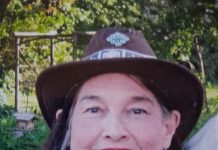Submitted by Katherine McCormack
Bruce Peninsula Environment Group (BPEG) was pleased to welcome back Jenna McGuire, this time sharing vast educational information on the local karst landscape.
Some examples of karst landscapes include cave systems, pinnacles and structures which make up some of the most significant landscapes on Earth. Most of Ontario’s known karst is located in proximity to the escarpment in the Northern Bruce Peninsula and on Manitoulin Island.
The process: With a pH of approximately 4.7, carbonic acid mixes with basic rocks, such as dolostone, causing its chemical dissolution. Past glacial events contributed to the fracturing of the rock as a result of the repeated compression and expansion of the rock due to the weight of the glaciers. More recently, constant exposure to water created tunnels, caverns and pit karrens. Biological activities, such as lichens growing on the rock, also contribute to the formation of these pit karrens. All of these processes work together to form underground caverns, some complete with stalagmites and stalactites.
Some local examples are the Leopard Frog Cave, the Grotto, and Greig’s Caves and Bruce’s Caves. These caves provide habitat for important flora and fauna, such as black bears and Massasauga rattlesnakes. Other interesting karst landscapes include cliffs, alvars and rocky shores.
The risks: In locations where there are structures built above these caverns, this can result in structural risks as the carbonate bedrock dissolves and sinkholes are formed above the bedrock. Sinkholes can also be formed when the water tables are drained due to quarries or land development. When the sinkholes form in natural areas, they are often filled with water and the result is a pond. Another risk factor is contamination. Due to the many fractures in the karst landscape, contamination can flow rapidly and its path is not easily traced. Spills from septic leaks, landfills or dumping travel quickly and we have little ability to predict where the contaminants will end up. Karst water flow can be determined using dye tracing and computer models, which maps the underground world
John Rodgers discussed the initiatives of Bruce Peninsula Biosphere Association with reference to understanding the relationship of the karst topography and local drinking water. The Biosphere is also looking at best practices for owners of private wells.
The next BPEG meeting is 5 November 2025. Please look out for the BPEG poster and social media posts on the upcoming meeting.















